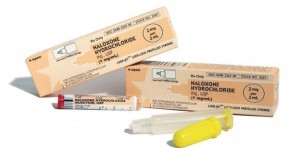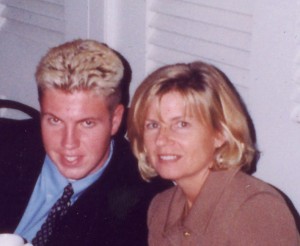
The drug naloxone reverses overdoses, but it needs to be used as a tool — not treatment – in saving lives, much like a defibrillator for the heart attack victim. We need more effective ways to save people from drug overdoses.
Just a few months ago, the drug naloxone was credited with rescuing the pop star Prince from an overdose of the painkiller Percocet. Sadly, six days later, the musician died from yet another self-administered drug called fentanyl, a type of synthetic opiate.
Prince’s case brings attention to all of these drugs, but I’d like to focus on naloxone — known as the “opioid antagonist” — specifically to the challenge of using the drug which is sold under the brand name Narcan, among others.
Studies have shown that people saved by naloxone often have another, sometimes, fatal, overdose soon afterwards, as was the case with Prince.
Here’s what happens: When a person takes prescription opioids in excessive amounts, the drugs can suppress breathing. Naloxone typically restores breathing within minutes. But after 30 minutes, the drug begins to wear off, and may be gone from a person’s system after 90 minutes.
Short time later, naloxone can trigger strong withdrawal symptoms, such as sweating and vomiting. Some people seek opioids to calm themselves and treat their withdrawal symptoms.
Naloxone may provide a false sense of security for the provider and victim. It’s a tool — not treatment — similar to a defibrillator for the heart attack victim. In both cases, the patient needs further treatment and follow-up care for survival.
My organization, NOPE Task Force, supports and promotes the use of naloxone by first responders, such as trained emergency medical technicians and law enforcement officers.
We have concerns, though, when the drug is administered by others. In fact, laws allowing naloxone to be prescribed to third parties such as family and friends of people addicted to opioids have been passed in 39 states. Many of these laws, at the very least, should be made stronger by requiring caregiver training and requiring the caregiver to be at least 18 years old.
This is an issue very personal to me.

My son, Richard, and I
On June 28, 2003, my son and college student, Richard Perry, died from an accidental drug overdose in Florida. Exactly one month prior to his death, Rich had overdosed on a combination of prescribed medications and heroin, and was admitted into a hospital emergency room where he was given three vials of Narcon. He was revived and released, with instructions: “Stop using drugs,” and “return to the ER if needed.”
None of our family members, nor any of Rich’s medical doctors, were made aware of his overdose incident that occurred on May 28, 2003. At the time of this first incident, all of Rich’s finances were being handled by my husband and me, including his health insurance and all medical doctor bills.
Months before his death, Rich was being treated for depression and anxiety and was taking the prescribed medications, Klonopin, Wellbutrin, and Ritalin. He was seeing a medical doctor and a psychologist. He also had been in treatment for addiction and was attending a follow-up program.
Had we been notified of his overdose and had he been fully detoxed and given the opportunity for treatment when he was admitted to the emergency room, Rich would be alive today or would have, at the very least, stood a fighting chance to recover from drugs and lead a good life.
We need a better way to follow up on an overdose. Through NOPE, I have been supporting the “Overdose Prevention Act” in Florida, a bill requiring specific rules be followed by an emergency care practitioner whose patient suffers a non-fatal unintentional overdose. These rules or procedures include proper medical stabilization and substance abuse Screening Brief Intervention and Referral to Treatment (SBIRT).
Here’s how it would work:
- Prior to a patient’s discharge, the attending physician shall make all reasonable efforts to contact the patient’s primary care physician and any practitioner who prescribed a controlled substance within the past 12 months to the patient, and inform that the patient has suffered a non-fatal overdose and may require substance use treatment.
- Additionally, the attending physician would notify the patient’s emergency contact or next of kin of the event and provide materials on addiction treatment, treatment facilities and practitioners, as well as information on local involuntary treatment laws.
Our hope is to see this bill pass in the Sunshine State, and have it adopted across the nation. A similar law is on the books in Rhode Island.
And so, I, along with NOPE, am cautious about the promotion of naloxone among family and friends until scientific data demonstrates third party distribution would not have unintentional negative effects on communities.
Naloxone is not a substitute for long-term treatment. Without follow-up care and treatment for a substance abuse disorder, the victim will likely suffer a subsequent overdose with the possibility of death.
Karen H. Perry, Executive Director of the NOPE Task Force
Published
June 2016
 Get Support
Get Support
